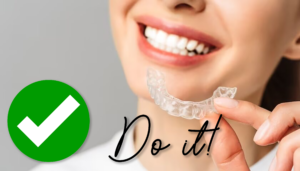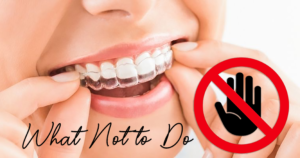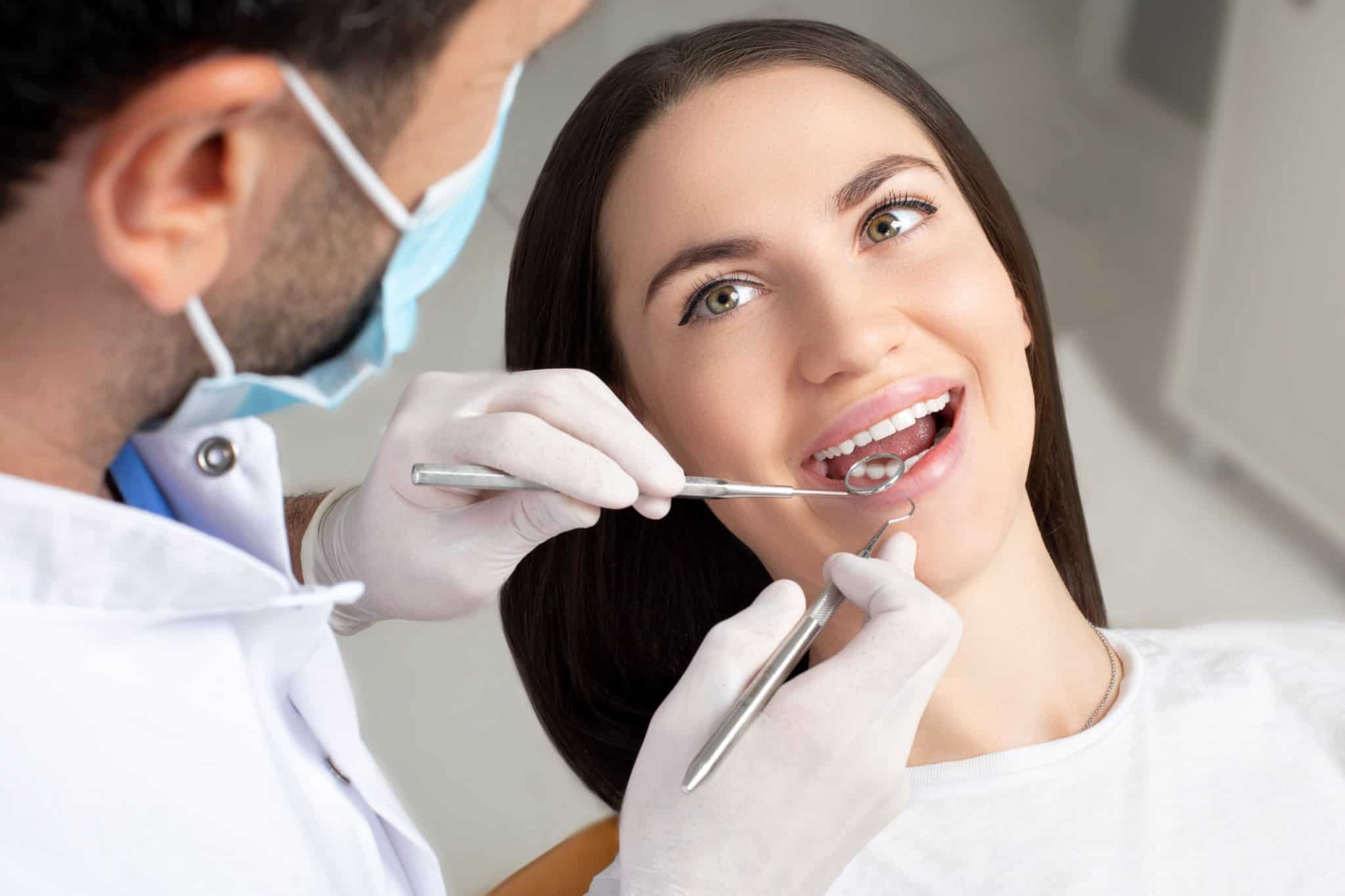Introduction to Invisalign Maintenance
Embarking on the journey of Invisalign treatment marks a significant step towards achieving a perfect smile. However, the true success of this orthodontic endeavor hinges not only on the advanced technology of Invisalign aligners but also on the effective maintenance and care practices adopted by users. In this comprehensive guide, we delve into the crucial aspects of Invisalign maintenance, shedding light on the best practices and essential tips to ensure your treatment is as effective and hygienic as possible. From the daily cleaning rituals to handling and storing your aligners, we cover all the bases to help you navigate this transformative journey with confidence and ease. Understanding the nuances of maintaining your Invisalign aligners is pivotal in ensuring they work efficiently and discreetly, leading you towards the radiant, well-aligned smile you aspire to achieve.
Understanding Your Invisalign Aligners
These custom-made aligners, crafted from medical-grade, BPA-free clear plastic, are designed to gradually move teeth into their proper position. Removable and less intrusive than traditional braces, they require a commitment to maintenance for optimal results.
Daily Cleaning: The Cornerstone of Aligner Care
-
Morning Routine:
Clean Start: Begin by thoroughly rinsing aligners under lukewarm water. Gently brush them with a soft-bristled toothbrush and clear, non-abrasive soap. It’s crucial to avoid colored or flavored soaps to prevent staining and unwanted tastes.
-
Evening Ritual:
Deep Cleaning: End the day by repeating the morning cleaning routine. For a more thorough clean, use Invisalign cleaning crystals or a dentist-recommended cleaning solution to dissolve bacteria and clear away any lingering particles.
Expert Tips for Invisalign Care
- Daily Cleaning of Aligners: It’s essential to brush your Invisalign aligners every morning and evening using a soft-bristled toothbrush and toothpaste. This routine helps remove bacteria and plaque, keeping the aligners clear and hygienic.
- Use of Cleaning Solutions: Soaking aligners in cleaning crystals, a mixture of soap and water, vinegar and water, or a baking soda solution can effectively clean and remove stains. Avoid using hot water, mouthwash, dishwasher, or soaps with dyes, as these can damage or discolor the aligners.
- Regular Oral Hygiene: Maintaining good oral hygiene is crucial. Brush your teeth after every meal or drink to prevent food particles or plaque from getting trapped under the aligners.
- Wearing Aligners Correctly: Wear your aligners for the recommended 22 hours per day, removing them only for eating, drinking (anything other than water), and brushing your teeth.
- Adhering to the Tray Schedule: Follow the schedule for changing your trays as instructed by your orthodontist. Insert new trays before bedtime to reduce discomfort and ensure they work effectively throughout the night.
- Utilizing Invisalign Attachments: Embrace any Invisalign attachments, as they enhance the effectiveness of the treatment by providing anchor points for the aligners.
- Proper Storage and Handling: Always store your aligners in their case when not in use to avoid loss or damage. Be mindful of temperature exposure; do not leave them in hot environments or use hot water for cleaning.
- Post-Treatment Care: After completing your Invisalign treatment, wear your retainer as advised to maintain the results.
Following these expert tips will help optimize your Invisalign treatment, ensuring you get the best results while maintaining good oral health and hygiene.
What Not to Do: Invisalign Maintenance No-Nos
When it comes to caring for your Invisalign aligners, beginners often make several notable blunders. It’s crucial to understand and avoid these missteps to ensure that your treatment is effective and your oral health remains in tip-top shape. Here are some common slip-ups in maintaining Invisalign aligners, along with tips on how to prevent them:
- Eating or Drinking with Aligners In: One of the most prevalent mistakes is indulging in food or drinks while your Invisalign aligners are in place. This can lead to unsightly stains and food particles becoming trapped in the trays, increasing the risk of plaque buildup and tooth decay. Always remember to take out your aligners before consuming anything other than water.
- Neglecting to Clean Aligners After Removal: It’s imperative to clean your aligners immediately after removing them. Give them a good rinse to eliminate any bacteria and food remnants, making future deep cleaning more manageable and keeping away unpleasant odors.
- Using Incorrect Cleaning Methods: Avoid using toothpaste or mouthwash to clean your aligners, as these can cause discoloration and damage. Instead, opt for a gentle antibacterial soap, denture cleaner, or specialized Invisalign cleaning products.
- Skipping Daily Maintenance: Consistently cleaning your aligners is of utmost importance. Neglecting this daily ritual can result in the buildup of harmful bacteria and potential oral health issues. Make it a habit to clean your aligners at least once a day.
- Exposing Aligners to Bacteria: When you’re not wearing your aligners, store them in an airtight container to minimize exposure to bacteria and prevent potential contamination.
- Wearing Broken Aligners: If your aligners happen to break, don’t hesitate to contact your orthodontist. Continuing to use damaged aligners can impede your treatment progress.
- Inconsistent Wear: Invisalign aligners are designed to be worn for approximately 22 hours per day. Inconsistent usage can lead to delays or negative effects on your treatment outcome.
- Disregarding Professional Advice: It’s crucial to adhere closely to the guidance provided by your orthodontist. This includes following instructions on when and how to wear your aligners and when to transition to a new set.
- Expecting Instant Results: Keep in mind that Invisalign treatment requires time, and noticeable improvements won’t happen overnight. Demonstrating patience and sticking to your treatment plan are vital for achieving the best possible results.
- Smoking with Aligners In: Smoking can stain your aligners and exacerbate oral health issues. It’s advisable to steer clear of smoking while undergoing Invisalign treatment.
By avoiding these common pitfalls, you can effectively maintain your Invisalign aligners, ensuring a more seamless and successful experience with your orthodontic treatment.
Troubleshooting Common Invisalign Issues
Troubleshooting common Invisalign issues is essential for ensuring the effectiveness of your orthodontic treatment. Invisalign is a popular and convenient alternative to traditional braces, but like any medical treatment, it can encounter some challenges. Here are some common Invisalign issues and how to troubleshoot them:
- Discomfort or Pain: Some level of discomfort is normal when you first start wearing Invisalign aligners or switch to a new set. You may feel pressure on your teeth. Over-the-counter pain relievers, such as ibuprofen, can help alleviate this discomfort. However, if the pain is severe or persistent, contact your orthodontist
- Aligners Not Fitting Properly: If your aligners don’t seem to fit correctly or feel uncomfortable, it’s essential to address this issue promptly. Make sure you are following the recommended schedule for changing your aligners. If the problem persists, consult your orthodontist for adjustments.
- Aligners Are Cracked or Damaged: Accidents can happen, and your aligners might become damaged. If you notice cracks or breakage, stop using them immediately and contact your orthodontist. Continuing to wear damaged aligners can hinder your treatment progress.
- Speech Impediments: Some people experience temporary speech changes, such as a slight lisp, when they start wearing Invisalign. Practice speaking, reading aloud, or singing to adjust to the aligners. Most individuals adapt quickly, and the lisp usually disappears within a few days.
- Aligners Not Tracking Properly: Invisalign treatment relies on the aligners gradually moving your teeth into the desired position. If you feel that your aligners are not tracking correctly or your teeth are not moving as expected, inform your orthodontist. They may need to make adjustments or order new aligners.
- Allergic Reactions: Although rare, some individuals may be allergic to the materials used in Invisalign aligners. If you experience any unusual symptoms, such as itching, swelling, or rashes in your mouth, consult your orthodontist immediately.
- Lost Aligners: Misplacing or losing your aligners can disrupt your treatment plan. Always keep your aligners in their case when you’re not wearing them. If you lose a set of aligners, contact your orthodontist to discuss the best course of action, which may involve moving to the next set or ordering replacements.
- Stains and Discoloration: Certain foods and drinks, like coffee or red wine, can stain your aligners. To prevent this, remove your aligners before consuming anything besides water. If they do become discolored, cleaning them with a specialized Invisalign cleaning product or a gentle antibacterial soap can help.
- Tracking Attachments Falling Off: In some cases, small attachments or buttons may be added to your teeth to help the aligners grip better. If any of these fall off, contact your orthodontist for a replacement to maintain the effectiveness of your treatment.
- Inconsistent Wear: It’s crucial to wear your Invisalign aligners for the recommended 22 hours per day. Inconsistent use can lead to delays in your treatment progress.
Conclusion: Your Role in Invisalign Success
In conclusion, maintaining Invisalign aligners is crucial for a successful orthodontic journey. This guide covers key care practices: daily cleaning, expert tips, and what to avoid. Proper care, including daily cleaning, wearing aligners correctly, and following expert advice, optimizes treatment.
Common mistakes to avoid include eating with aligners, neglecting cleaning, using wrong methods, skipping maintenance, and more. Troubleshooting common issues, like discomfort or lost aligners, requires prompt communication with your orthodontist.
In summary, diligent Invisalign maintenance, adherence to expert guidance, and addressing issues promptly are essential for achieving a straight, healthy smile and a smooth orthodontic experience.
Ready for a Smile Transformation?
In your journey towards maintaining a healthy and radiant smile with Invisalign, remember that regular dental check-ups are essential. City Dental Clinic Surrey is here to support your oral health needs. To schedule an appointment or learn more about our services, visit our website at City Dental Clinic Surrey. Your smile deserves the best care, and we’re here to help you achieve it.
Experience Invisalign Excellence at City Dental Clinic Surrey
For top-tier dental care and transformative Invisalign Surrey, City Dental Clinic stands as a premier destination. Our Invisalign specialists leverage state-of-the-art techniques and personalized treatment approaches to address various orthodontic concerns. Patients receive individualized attention, tailored treatment plans, and continuous support at our clinic, ensuring a seamless and gratifying Invisalign experience. Visit City Dental Clinic Surrey to explore how our dedicated team amalgamates dental expertise with innovative Invisalign solutions, creating captivating smiles while bolstering overall dental health.









